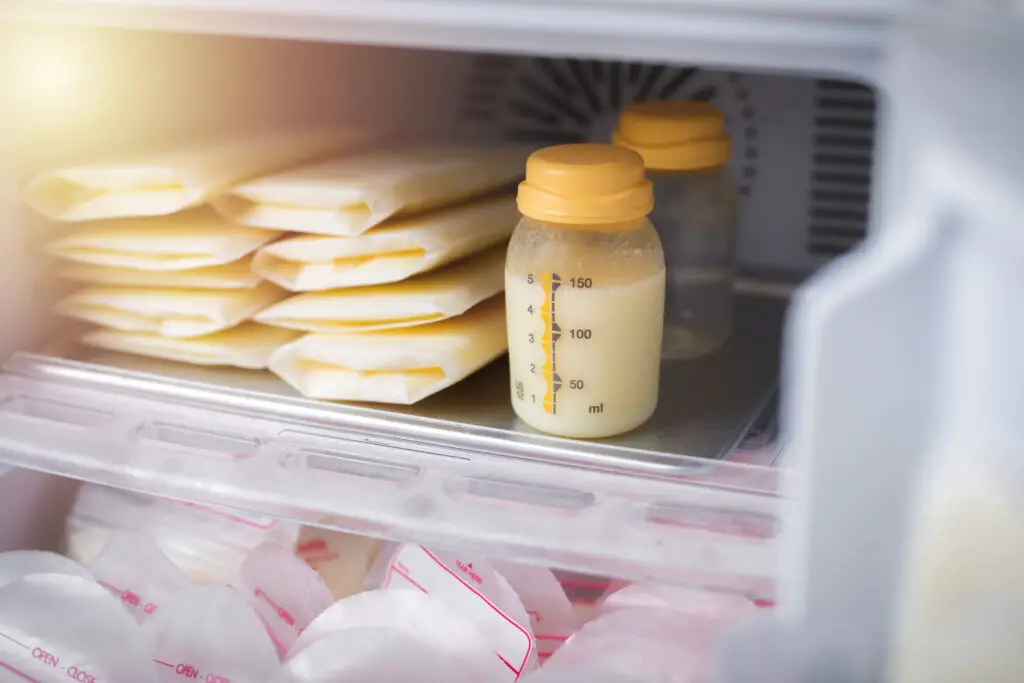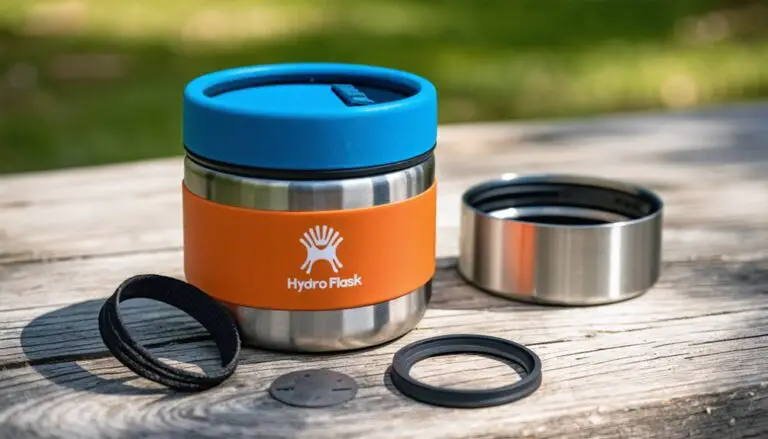When it comes to storing breastmilk, it’s essential to choose the right storage containers to maintain the quality and freshness of the milk. Breastmilk storage bottles and bags are two common options available to nursing mothers. While both have their advantages, it’s crucial to understand the differences to make an informed decision. In this section, we will explore the importance of breastmilk storage and factors to consider when choosing storage containers.
I. Importance of Breastmilk Storage
Breastmilk is a valuable source of nutrition for infants, providing essential nutrients and antibodies that support their growth and development. However, storing breastmilk properly is crucial to ensure its safety and efficacy. Here are a few reasons why breastmilk storage is important:
- Convenience: Storing breastmilk allows nursing mothers to have a supply of milk readily available for feeding their baby, especially when they are away or unable to breastfeed directly.
- Backup Supply: Storing breastmilk can serve as a backup supply in case of emergencies, such as when the mother is sick or unable to produce enough milk.
- Extended Feeding: Storing breastmilk allows other caregivers, such as partners or family members, to participate in feeding the baby, providing bonding opportunities and support for the mother.
- Transition Planning: Storing breastmilk can assist in the transition from breastfeeding to bottle-feeding, gradually introducing the baby to alternative feeding methods.
Factors to Consider When Choosing Storage Containers
When choosing between breastmilk storage bottles and bags, several factors should be taken into consideration. These factors can include:
- Storage Space: Breastmilk storage bottles may take up more space in the refrigerator or freezer compared to bags, so consider the available storage space in your home.
- Portability: Breastmilk storage bags are typically more portable and can be easily transported, making them convenient for on-the-go moms or for those who need to pump milk at work.
- Sterilization: Breastmilk storage bottles require proper sterilization before use, while bags are typically pre-sterilized and disposable, making them more convenient.
- Leakage: Some bottles may be prone to leakage, while bags usually have a secure sealing mechanism to prevent leaks and spills.
- Freezing Duration: Consider the duration for which you plan to freeze the breastmilk. Bags are generally more suitable for long-term freezing, while bottles may be better for short-term storage.
It’s important to note that both breastmilk storage bottles and bags can effectively store and preserve breastmilk. The choice ultimately depends on your personal preferences, lifestyle, and specific needs.
In the next section, we will compare the features, pros, and cons of breastmilk storage bottles and bags to help you make an informed decision.
II. Breastmilk Storage Bottles
When it comes to storing breast milk, one popular option is using breastmilk storage bottles. These bottles offer several advantages for breastfeeding mothers. Here are a few key benefits of using breastmilk storage bottles:
Advantages of Breastmilk Storage Bottles
1. Durable and Reusable: Breastmilk storage bottles are made from durable materials such as BPA-free plastic or glass, which ensures that they can withstand regular use and frequent sterilization. This makes them a cost-effective choice for long-term use.
2. Easy to Measure: Most breastmilk storage bottles come with clear measurement markings on the side, allowing you to easily track the volume of milk you have pumped. This feature is especially helpful for mothers who need to monitor their milk supply.
3. Leak-proof: Breastmilk storage bottles are designed to be leak-proof, minimizing the risk of spills and wasting precious breast milk. These bottles typically come with tight-fitting lids that create a secure seal, keeping your breast milk safe during storage and transport.
4. Convenient for Feeding: Many breastmilk storage bottles are compatible with breast pumps, allowing you to pump directly into the bottle. This saves time and reduces the need for transferring milk from one container to another before feeding your baby.
5. Easy to Clean: Breastmilk storage bottles are generally easy to clean and sterilize. They can be washed by hand or in a dishwasher, and some models can even be sterilized in a microwave. This convenience is essential for busy moms who want to spend less time on cleaning tasks.
Popular Brands and Their Features
There are several popular brands of breastmilk storage bottles available on the market, each with its unique features and designs. Here are a few examples:
1. Medela Breastmilk Storage Bottles: Medela is a well-known brand in the breastfeeding industry, and their breastmilk storage bottles are no exception. These bottles are compatible with most Medela breast pumps and feature volume markings in both ounces and milliliters. They also have screw-on lids for secure storage and transportation.
2. Philips Avent Breastmilk Storage Bottles: Philips Avent offers a range of breastmilk storage bottles in different sizes. Their bottles are made from BPA-free materials and feature an easy-to-read measuring scale. The bottles are compatible with Philips Avent breast pumps, allowing for direct pumping into the bottle.
3. Lansinoh Breastmilk Storage Bottles: Lansinoh bottles are made from high-quality, BPA-free plastic and are compatible with most breast pumps. They come with leak-proof lids and sealing discs, providing a secure seal for storage. The bottles are also dishwasher-safe and can be stored in the freezer.
It’s important to choose breastmilk storage bottles that are compatible with your breast pump and meet your specific needs. Additionally, always follow proper storage guidelines to ensure the safety and quality of your expressed breast milk.
III. Breastmilk Storage Bags
When it comes to storing breast milk, many nursing mothers choose to use breast milk storage bags for their convenience and practicality. These bags offer several advantages over traditional storage bottles. Here are some of the advantages of using breast milk storage bags:
Advantages of Breastmilk Storage Bags
1. Space-saving: Breast milk storage bags are designed to be compact and thin, allowing for easy storage in small spaces, such as refrigerators or freezers. They take up less space compared to bulky storage bottles, which is especially valuable for mothers with limited freezer space.
2. Easy to use: Breast milk storage bags typically feature a convenient pour spout and a secure sealing mechanism. This makes it easy to fill, store, and pour breast milk without the need for additional accessories.
3. Portable: Breast milk storage bags are lightweight and portable, making them ideal for moms on the go. They can be easily slipped into a diaper bag or purse, allowing mothers to store and transport breast milk without hassle.
4. Freezing and thawing: Breast milk storage bags are designed to withstand freezing temperatures. This makes it easy to store breast milk for an extended period, and the bags can be safely thawed when needed.
5. Hygienic: Breast milk storage bags are designed for single-use, reducing the risk of contamination or bacteria buildup. This ensures that your breast milk remains safe and hygienic for your baby.
Popular Brands and Their Features
There are several popular brands of breast milk storage bags available on the market, each offering unique features to cater to different needs. Here are some of the popular brands and their notable features:
- Lansinoh Breastmilk Storage Bags: These bags are made from durable and leak-proof material, with a double zipper seal to ensure the breast milk remains secure. They also feature a convenient pour spout and a write-on label for easy labeling and dating.
- Medela Breastmilk Storage Bags: Medela offers storage bags with a unique feature called the Easy-Connect Adapter. This allows you to pump directly into the bag, eliminating the need for transferring milk and minimizing the risk of spills or contamination.
- NUK Seal N Go Breast Milk Bags: NUK storage bags come with a leak-proof double zipper seal and a self-standing design for easy filling. They also have a built-in ounce and milliliter measurement scale for accurate portioning.
- Dr. Brown’s Breastmilk Storage Bags: Dr. Brown’s bags feature a double zipper seal to prevent leakage, as well as a reinforced side seam for added durability. They also come with a built-in pour spout and a labeling area for convenience.
When choosing a breast milk storage bag, it’s important to consider your specific needs and preferences. Some factors to consider include the durability, ease of use, and compatibility with your breast pump. Additionally, always ensure that the bags you choose are BPA-free and meet appropriate health and safety standards.
Using breast milk storage bags can simplify the process of storing and transporting breast milk, allowing nursing mothers to conveniently provide their baby with the nourishment they need, even when they’re away.
IV. Comparison Between Bottles and Bags
When it comes to breastmilk storage, there are two popular options: bottles and bags. Both have their advantages and drawbacks, so let’s compare them to help you decide which option is best for you.
Ease of Use
Bottles:
- Bottles are easy to use and can be directly attached to a breast pump, eliminating the need for transferring milk from one container to another.
- They are also easy to clean, as they can be washed with soap and water or placed in a dishwasher.
- However, bottles can take up more space in your refrigerator or freezer, especially if you have a large milk supply.
Bags:
- Breastmilk storage bags are convenient when it comes to storing and transporting milk.
- They are pre-sterilized, making them hygienic and safe for storing breastmilk.
- Bags are also space-efficient, as they can be stacked and stored flat in the freezer.
- However, transferring milk from a bottle to a bag can be a bit messy, and some bags may leak if not sealed and handled properly.
Storage Space Efficiency
Bottles:
- Bottles can take up more space in your refrigerator or freezer, especially if you have a large milk supply.
- However, they may be more organized, as you can easily see how much milk you have stored in each bottle.
- If you have limited storage space, consider using smaller bottles to maximize space.
Bags:
- Breastmilk storage bags are space-efficient, as they can be stacked and stored flat in the freezer.
- They take up less space compared to bottles, allowing you to store more milk in a limited space.
- However, it may be more challenging to keep track of the amount of milk stored in each bag, as the measurements may not be as visible as they are on bottles.
Cost Comparison
Bottles:
- Bottles may require an upfront investment, as you will need to purchase a set of bottles and nipples.
- However, bottles are reusable, so you won’t need to continuously buy new containers.
- If you plan to pump and store breastmilk long-term, bottles may be more cost-effective in the long run.
Bags:
- Breastmilk storage bags are typically more affordable, especially if purchased in bulk.
- However, they are single-use and will need to be replaced after each use, which can add up if you plan to store a significant amount of milk long-term.
Remember to consider your specific needs and preferences when choosing between breastmilk storage bottles and bags. It’s essential to find an option that is convenient, space-efficient, and fits your budget. Ultimately, both bottles and bags are effective choices for storing and preserving breastmilk.
V. Best Practices for Breastmilk Storage
Proper Handling and Storage Techniques
When it comes to storing breastmilk, following proper handling and storage techniques is crucial to maintain its quality and safety for your baby. Here are some tips to keep in mind:
- Wash Hands: Before expressing or handling breastmilk, make sure to wash your hands thoroughly with soap and warm water to prevent the transfer of bacteria.
- Use Clean Containers: Use clean, sterilized containers specifically designed for breastmilk storage. This can include breastmilk storage bottles or bags, depending on your preference.
- Label and Date: Always label each container with the date and time the breastmilk was expressed. This will help ensure that you use the oldest milk first and avoid wasting any precious liquid gold.
- Store in Appropriate Quantities: Store breastmilk in small quantities, such as 2 to 4 ounces, to avoid wasting any milk if your baby doesn’t finish a full bottle.
- Store in the Back of the Fridge or Freezer: Place the containers of breastmilk in the back of the refrigerator or freezer where the temperature is most consistent and less likely to fluctuate.
- Keep Away from Raw Meat or Eggs: To prevent any contamination, store breastmilk containers away from raw meat or eggs in the refrigerator or freezer.
- Thaw Breastmilk Slowly: When thawing frozen breastmilk, do it slowly in the refrigerator or by placing the container in a bowl of warm water. Avoid using a microwave as it can create hot spots and destroy the nutrients in the milk.
Tips for Maintaining the Quality of Breastmilk
To ensure that your baby receives the full benefits of breastmilk, here are some additional tips for maintaining its quality:
- Follow the FIFO Method: FIFO stands for “first in, first out.” Always use the oldest milk first to prevent any milk from spoiling.
- Do Not Refreeze Thawed Breastmilk: Once breastmilk has been thawed, do not refreeze it. Instead, use it within 24 hours or discard any leftovers.
- Avoid Shaking: Instead of shaking the breastmilk, gently swirl it to mix the separated fat back into the milk. Shaking can break down the milk and destroy some of its valuable components.
- Handle Breastmilk With Care: Avoid dropping or vigorously shaking containers of breastmilk as this can damage the milk and cause spills.
- Check for Changes in Smell or Appearance: Before feeding your baby a stored bottle of breastmilk, check for any changes in smell or appearance. If it smells sour, has clumps, or appears discolored, it may have gone bad and should be discarded.
By following these best practices for breastmilk storage, you can ensure that your baby receives the highest quality milk while giving yourself peace of mind. Remember, breastmilk is a precious gift of nature, and proper storage is essential to preserve its nutrients and benefits for your little one.
VI. Factors to Consider When Choosing Between Bottles and Bags
When it comes to storing breastmilk, choosing between bottles and bags depends on your personal preferences and specific needs. Here are some factors to consider when deciding which option is best for you:
1. Convenience: Breastmilk bags are generally more convenient for storage and transportation. They are lightweight, easy to seal, and take up less space in the freezer. Bottles, on the other hand, are bulkier and may require additional storage space.
2. Sterility: Both bottles and bags can be sterilized before use. However, bags are considered more hygienic as they are disposable and can be thrown away after use, reducing the risk of contamination.
3. Portion Control: Breastmilk bags are typically pre-sterilized and come in pre-measured portions, making it easier to control the amount of milk you are storing. Bottles, on the other hand, allow for more flexibility in portion sizes and are easier to pour and transfer milk into.
4. Freezer Space: If you have limited freezer space, breastmilk bags may be a more practical option as they can be stacked and stored more efficiently. Bottles may take up a significant amount of space, especially if you are storing large quantities of milk.
5. Cost: Breastmilk bags are generally more affordable than bottles, especially if you plan on storing a large amount of milk. However, keep in mind that bags are disposable and will need to be repurchased regularly.
Key Points to Remember when Storing Breastmilk
Here are some important considerations to keep in mind when storing breastmilk:
1. Proper Labeling: Always label your breastmilk containers with the date and time of expression to ensure freshness and prevent waste.
2. Hygiene: Wash your hands thoroughly before handling breastmilk and ensure that all storage containers and equipment are clean and sterilized.
3. Storage Time: Breastmilk can be safely stored in the refrigerator for up to 4 days and in the freezer for 6-12 months. Be sure to follow recommended guidelines for proper storage and discard any milk that has expired.
4. Thawing and Warming: When ready to use stored breastmilk, thaw it slowly in the refrigerator or under warm running water. Avoid microwaving breastmilk, as it can cause uneven heating and destroy valuable nutrients.
5. Breastmilk Properties: It is normal for breastmilk to separate or change in color and smell when stored. Gently swirl the container to mix any separated fat before feeding.
In conclusion, the choice between breastmilk storage bottles and bags depends on your specific needs and preferences. Consider factors such as convenience, sterility, portion control, freezer space, and cost when making your decision. Remember to follow proper storage guidelines and hygiene practices to ensure the quality and safety of your breastmilk.




